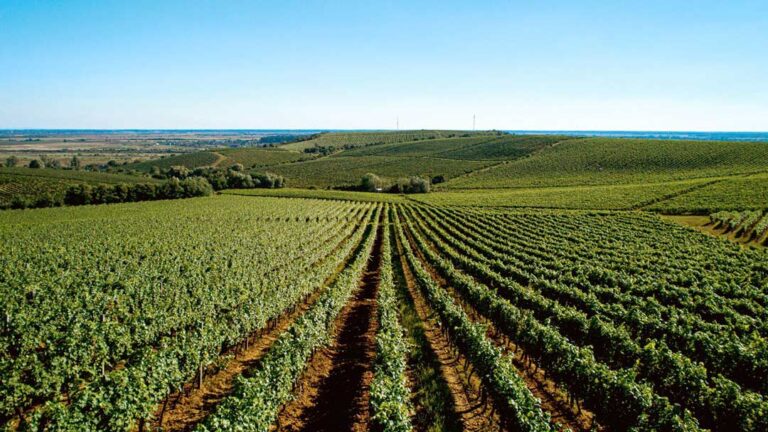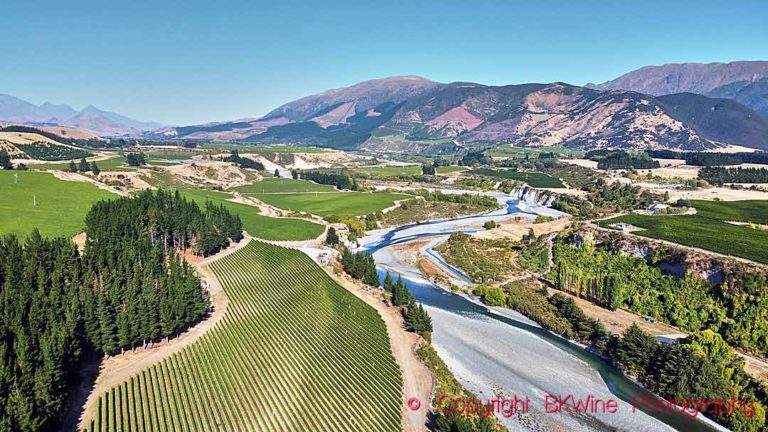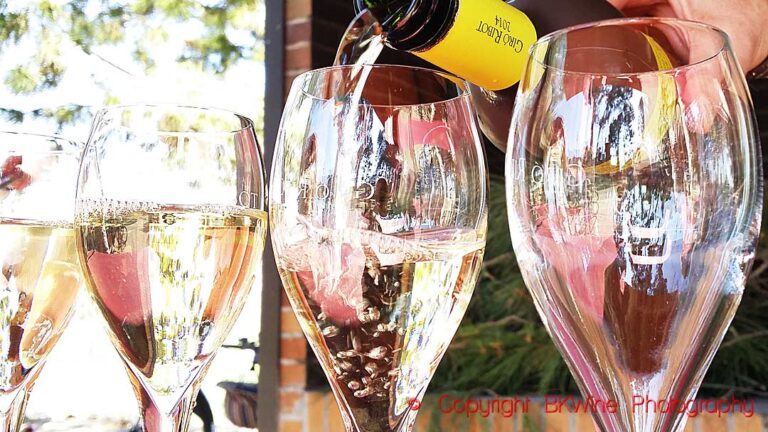Jura is a small wine region with a large selection of different wines. They can be red, white, rosé, sweet and sparkling. Here we also find the unique yellow wine, vin jaune. Their chardonnay wines are made in a singularly unique style. In the Jura, uniformity is not in the vocabulary.
More and more wine consumers are discovering the wines of Jura, not least outside of France. The wines have a character that appeals to wine enthusiasts, the young, the natural wine lovers and more. It is still an unknown wine region to many. 80% of the wines are sold locally. But things are slowly changing.
And we should not forget that the most famous wine festival in France is held in the Jura, every year the first weekend of February. This year (2022), however, because of Covid restrictions, the festival has been moved to the first weekend of April. The small towns around the region take turns hosting.
This is a longer version of an article published on Forbes.com.
The winegrowers bring their wines, and thousands of visitors taste and buy. La Percée du Vin Jaune, as the festival is called, celebrates Jura’s most famous wine, vin jaune, the yellow wine. But all types of Jura wines are poured into the glasses. It is a huge, lively carnival-like celebration and the highlight is the tasting of the new vintage of vin jaune, straight from the barrel. This year it is the vintage 2015 that is celebrated.
Jura is 100 kilometres east of Burgundy and borders the Alps to the south. It is a beautiful, mountainous region with vast forests. Even if some people don’t know the wines, they certainly know the magnificent cheeses: comté, mont d’or, morbier and more. The wine region is 1,900 hectares.
Vin jaune
Only around 5% of Jura wines are vin jaune. But it is famous far beyond the boundaries of the Jura. It is a peculiar wine, exceptionally dry and fresh, with a unique, slightly oxidized character. Some like it right away; others have to get used to it. It is a lovely food wine, and with its high acidity, it is ideal as an aperitif.
You can get a bit of a shock the first time you taste a vin jaune. The unique properties come in part from the grape savagnin, which has unusually high acidity. But the production method itself gives a lot of character. If you like sherry and are used to drinking fino, the driest type of sherry, then you will recognize the style.
Savagnin
Savagnin is a grape that is mainly found in the Jura. France has around 600 hectares. The plantings have grown over the past 15 years, both in France and other countries. It is found in Germany (often called traminer), Slovenia, Switzerland, Austria, Bulgaria, Australia and more countries. The grapes are small with thick skin, which gives them good resistance to fungal diseases. Another property that makes it well suited for vin jaune is that it can ripen to high sugar levels while maintaining high acidity.
To make a vin jaune, the must ferments slowly to a completely dry wine. This wine is then put in oak barrels, often 228 litres. According to the rules, the wine must be aged here for a minimum of six years. It may be bottled no earlier than December 15, six years after the harvest. The barrels must not be topped up to compensate for evaporation, and no racking takes place during this entire period. And strangely enough, the wine will not turn to vinegar.
The veil of the wine
In the barrel, a curious phenomenon will take place, in French called prise de voile. The veil is a layer of yeast (various Saccharomyces, including the regular wine yeast) that will cover the surface of the wine. It is, in fact, yeast that is present in the wine and that floats to the surface and develops. This layer of yeast prevents the wine from being ruined during its many years in the barrel. It protects the wine from oxidation and harmful acetic acid bacteria. The veil is similar to the flor formed in the sherry region, although they have other Saccharomyces strains.
Savagnin has enough acidity and alcohol to withstand the ordeal that this type of ageing is for the wine.
The yeast layer causes the ethanol to oxidize and form acetaldehyde (ethanal), which gives the wine a dry, nutty and oxidized character. It also forms volatile acidities and a molecule called sotolon that gives aromas reminiscent of curry and walnuts. In addition, the glycerol content in the wine will be drastically reduced, which has a significant impact on the mouthfeel. The layer of yeast will consume any residual sugar in the wine, making it bone dry. Dead yeast cells that fall to the bottom of the barrel contribute their autolysis character. Autolysis is the slow breakdown of the dead yeast cells. It also happens in champagnes.
The producer will not stir the wine during the barrel ageing, but it is vital to control it and do regular tastings. The volatile acidity must not be too high. Barrels that do not meet the requirements for a vin jaune may get shorter ageing and become a “regular” jura wine. The temperature during the ageing plays a role in the character of the wine, and some producers have several different places where they store the barrels – it can also be, for example, an attic – with different temperatures. Before bottling, all the barrels are blended.
Of course, some of the wine evaporates during this time. A vin jaune is always sold in a special bottle of 62 centilitres called le clavelin. 62 centilitres are said to be what is left from a litre of wine after ageing.
The appellations
We have tasted a selection of vin jaune from a few different vintages from the four appellations, Côtes de Jura, Arbois, l’Etoile and Château-Chalon. (Chateau Chalon is indeed not an estate/winery but an appellation.) There are differences between the appellations, although it is not always easy to spot them. There are other factors that very much influence the character of the wine. It may depend on where the barrels are stored and how significant the temperature differences are between the seasons. Of course, as always, it also depends on the producer.
It is easy to see the similarities. The wines are crispy dry, slightly oxidized, rich and complex, full-bodied, with aromas of nuts, almonds, curry, dried fruit, ginger, saffron. It is the intensity and the concentration that varies.
In terms of price, Château-Chalon is the most expensive vin jaune. This small AOP of 60 hectares produces only vin jaune. For the most sought-after producers, the prices can be 80-100 euros and more for a bottle. But in general, a vin jaune is around 50 euros.
Vin Jaune 2014, Arbois, Jean-Louis and Valérie Tissot
Crispy dry with a pleasant mouthfeel, quite intense and concentrated. Exotic spices and dried apricots, and hints of toasted bread.
Château-Chalon 2014, Fruitière Vinicole Arbois
Very high acidity and a good fullness that balances. Complex aromas, brioche, dried apricot, slightly fat on the palate, lingering taste.
Château-Chalon En Beaumont 2014, Domaine Emmanuel et Nathalie Grand
Nutty, full-bodied, great concentration. You drink it slowly. It is not a glou-glou wine.
Vin Jaune 2014, Etoile, Domaine Philippe Vandelle
Expressive. Very dry, very fresh in a light and elegant style.
Vin Jaune 2014, Domaine Noir Frères, Côtes-du-Jura
Slightly milder acidity, relatively light in style, hints of vanilla and walnuts.
Vin Jaune 2014, Domaine Badoz, Côte du Jura
Intense, very fresh, elegant, balanced acidity.
Vin Jaune 2013, Domaine Dugois, Arbois
Complex aromas, spices, cinnamon, curry, full-bodied on the palate and long taste.
Château-Chalon 2014, Domaine Jean-Luc Mouillard
Shockingly high acidity, even drier than the others (if that is possible), but also full-bodied and rich, which makes a lovely combination.
Vin Jaune 2013, Domaine Pecheur, Côte du Jura
Discreet on the nose, high acidity and complexity on the palate.
Vin Jaune 2012, Arbois, Domaine Rolet Père & Fils
Slightly milder acidity, toasted bread, dried fruit, nuts, almonds.
Vin Jaune 2012, Côtes du Jura, Domaine Bourdy
Great concentration and long taste, great mouthfeel with some roundness in the finish. Aromas of walnuts, fried apples and spices.
Château-Chalon 2011, Domaine Maire et Fils
Discreet aromas but full-bodied and intense on the palate. Nuts and exotic spices dominate.
Vin Jaune 2010, Domaine de Sainte Marie, Côtes du Jura
Apples on the verge of over ripeness, dried apricots, nuts and curry.
Vin Jaune 2005, Domaine de Sainte-Marie, Côtes du Jura
Mature character, apricot, exotic spices, good intensity.
Château Chalon 2014, Domaine Berthet-Bondet
Intense and lingering taste, quite powerful.
Other Jura wines
Not all savagnin grapes are used for vin jaune. The producers also make magnificent savagnin wines with shorter ageing, sometimes topped up (ouillé), sometimes not (non-ouillé). Sometimes they blend with chardonnay.
Chardonnay is the most widely planted grape in the Jura. Burgundy is close geographically. But a chardonnay from Jura is far from a burgundy copycat. A classic Jura chardonnay is aged in barrels without compensating for evaporation and with a yeast veil. If, on the other hand, the winemaker wants to make a more modern chardonnay, he makes sure that the barrels are topped up and avoids all contact with the air. But even these “normal” chardonnay wines often have a unique, oxidative character, typical of Jura.
Jura has had great success with its excellent crémant de jura in recent years. This sparkling wine can be made across the entire region. Since Jura received its AOP Crémant-du Jura in 1995, production and sales have steadily increased. Crémant du Jura now accounts for around 25% of total sales.
For obvious reasons, many people think of white wine when they think of the Jura. The producers also want to put focus on red wines. Delicious reds are made from poulsard, trousseau and pinot noir. Poulsard and pinot noir usually give fruity wines in light and easy-drinking styles. The trousseau grape is more structured and concentrated.
Vin de paille is an exclusive, sweet wine made from grapes that are dried for some time after harvest.
The local gastronomy
Comté, the local cheese, has a slight nuttiness and a smooth taste that goes well with a white Jura wine or a vin jaune. Choose one aged at least 12 months, preferably 24 months. Also, try curry shrimps and poultry in cream sauce. Bourg-en-Bresse, with its superb AOP chickens, is not far from here. A classic in French cuisine is poulet de bresse au vin jaune.

















